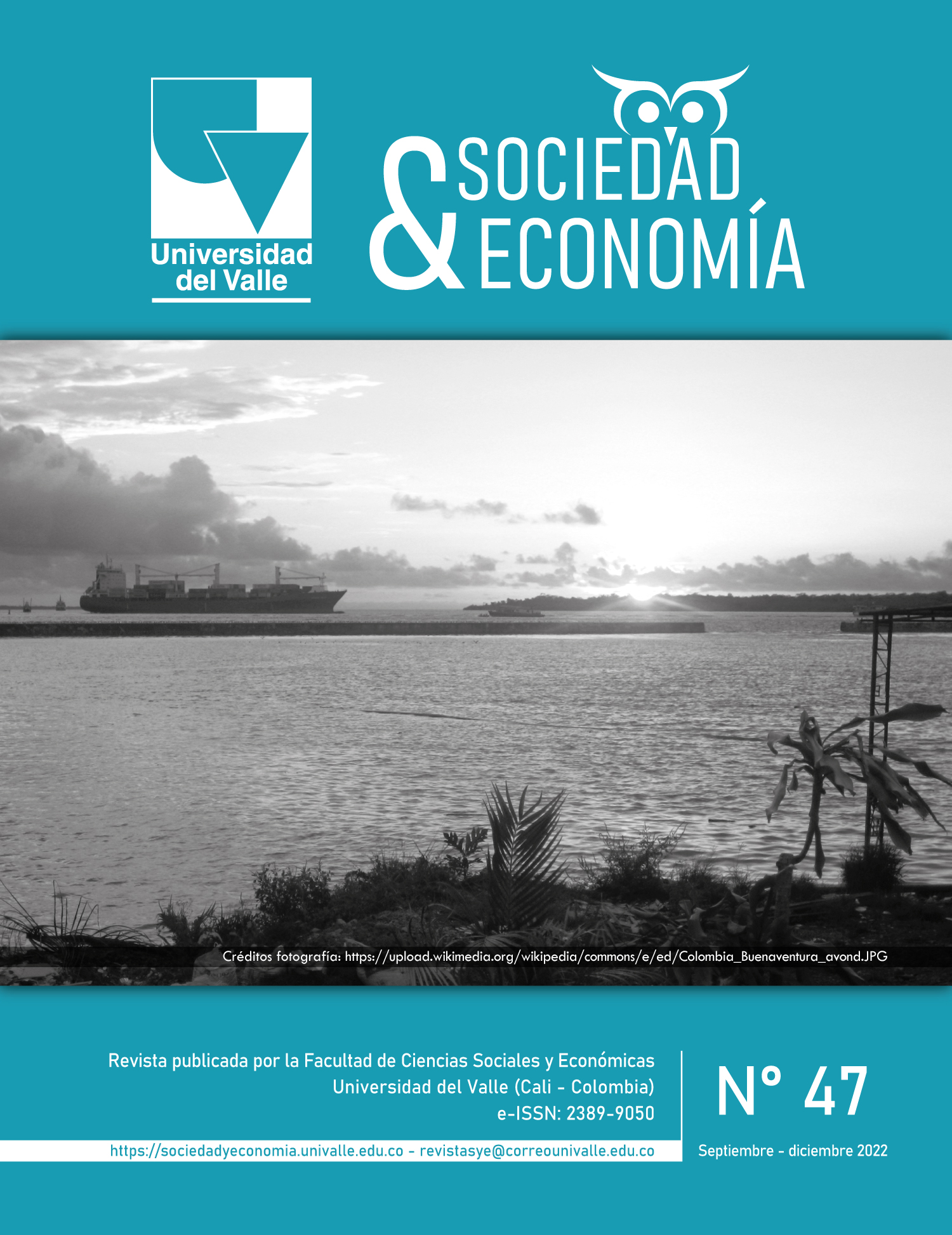Perceptions of Rural Community-Based Tourism in the Province of Alto Ricaurte, Boyacá (Colombia)
Keywords:
tourism industry, regional economy, lifestyle, cultural people, Alto RicaurteMain Article Content
This article shows the processes of tourism associativity in the Alto Ricaurte region (Boyacá), identified through the review of primary and secondary bibliographic sources, as well as documentary archives of the municipal mayors' offices, the Governor's Office of Boyacá, and several organizations that work in tourism in the department. The use of information gathering tools such as interviews, data collection, and organization led to the recognition of complex issues related to social organization in different administrative frameworks, local, and provincial, by resource units or communities, through a quantitative methodology. It is evident that the study area has complex systems of socialization, and that they are permeated by cultural aspects, forms of governance, economic relations, and exercises of power, with the tensions that are expressed within the same territories and that affect positively or negatively the economy of this province.
Agrawal, A. y Chhatre, A. (2007). Institutions, co-governance, and forests in the Indian Himalayas. Comparative Studies in International Development, 42(1-2), 67-86. https://doi.org/10.1007/s12116-007-9004-6
Alchian, A. A. (1950). Uncertainty, evolution, and economic theory. Journal of Political Economy, 58(3), 211- 221. https://doi.org/10.1086/256940
Almond, G. A. y Genco, S. J. (1977). Clouds, clocks, and the study of politics. World Politics: A Quarterly Journal of International Relations, 29(4), 489-522. https://doi.org/10.2307/2010037
Bauman, Z. (2003). Intimations of postmodernity. Routledge.
Bauman, Z. (2006). Comunidad: en busca de seguridad en un mundo hostil. Siglo XXI.
Bourdieu, P. (1991). Language and symbolic power. Harvard University Press.
Burawoy, M. (1998). The extended case method. Sociological Theory, 16(1), 4-33. https://doi. org/10.1111/0735-2751.00040
Castel, R. (2010). El ascenso de las incertidumbres: trabajo, protecciones, estatuto del individuo. Cuadernos de Trabajo Social, 24, 167-169. https://revistas.ucm.es/index.php/CUTS/article/view/36877
Coleman, E. A. y Steed, B. C. (2009). Monitoring and sanctioning in the commons: An application to forestry. Ecological Economics, 68(7), 2106-2113. https://doi.org/10.1016/j.ecolecon.2009.02.006
Cortés, R. y Sinisterra, M. (2010). Sociedad civil, capital social y desarrollo sostenible. En busca de las fuentes de progreso del Cauca. IyD, 3(1), 97-100. https://doi.org/10.26620/uniminuto.inclusion.3.1.2016.97-100
Cuervo, A., Conde, N. y Oliva, V. (2018). Contribución del turismo comunitario al desarrollo local. Caso: Gachantiva, Boyacá-Colombia. XXI Congreso Virtual Internacional Turismo y Desarrollo. https://www. eumed.net/actas/18/turismo/3-contribucion-del-turismo-comunitario.pdf
Cuervo, A., Oliva, V. y Conde, N. (2020). El turismo comunitario en la defensa del territorio y el buen vivir. Caso: provincia Ricaurte, Boyacá - Colombia. En Turismo y desarrollo rural: Realidades diversas y propuestas sostenibles desde América Latina (pp. 326-353). Ediciones Uleam.
DANE –Departamento Administrativo Nacional de Estadística–. (2014). Censo Nacional Agropecuario 2014. https://www.dane.gov.co/index.php/estadisticas-por-tema/agropecuario/censo-nacional- agropecuario-2014
Durkheim, E. (1987). La división del trabajo social (vol. 39). Ediciones Akal.
Fals-Borda, O. (1957). Indian Congregations in the New Kingdom of Granada: land tenure aspects, 1595-1850. The Americas, 13(4), 331-351. https://doi.org/10.2307/979439
Foucault, M. (1985). História da sexualidade III: o cuidado de si. Graal. Foucault, M. (2012). Discipline and punish: The birth of the prison. Vintage. Gadamer, H. G. (1975). Truth and Method. Seabury Press.
Han, B. C. (2013). La sociedad de la transparencia. Herder Editorial.
IGAC –Instituto Geográfico Agustín Codazzi–. (s.f.). Catastro multipropósito de Boyacá. https://igac.gov.co/es/catastro-multiproposito/convocatorias/en-boyaca
Jiménez-Bulla, L. H. y Jiménez-Barbosa, W. G. (2013). Turismotendencias globales y planificación estratégica. Ecoe Ediciones.
Leguizamo, A. (2020). Oficio emitido por Secretaría de Turismo de Boyacá. https://drive.google.com/file/d/ 1oPrLPLF3bIdQmi69bTWSo9oRQsw8ngA6/view
Lozano, J. A. (2017). Alfonso Torres Carrillo. El retorno a la comunidad. Problemas, debates y desafíos de vivir juntos. PAPELES, 8(16), 107-108. https://revistas.uan.edu.co/index.php/papeles/article/view/459
Mantzavinos, C. (2004). Individuals, institutions, and markets. Cambridge University Press.
Max-Neef, M., Elizalde, A. y Hopenhayn, M. (1993). Desarrollo a escala humana. Conceptos, Aplicaciones y Algunas Reflexiones. Editorial Nordan-Comunidad.
Ostrom, E. (2009). El gobierno de los bienes comunes: la evolución de las instituciones de acción colectiva. Universidad Nacional Autónoma de México.
Ostrom, E., Janssen, M. A. y Anderies, J. M. (2007). Going beyond panaceas. Proceedings of the National Academy of Sciences, 104(39), 15176-15178. https://doi.org/10.1073/pnas.0701886104
Ostrom, E., Poteete, A. y Janssen, M. A. (2012). Trabajando juntos. Acción colectiva y múltiples métodos en la práctica. UNAM; FCE.
Packer, M. (2013). La ciencia de la investigación cualitativa. Ediciones Uniandes.
Piketty, T. (2020). Capital and ideology. Harvard University Press.
Polanyi, K. (2007). La gran transformación: crítica del liberalismo económico. Fondo de Cultura Económica.
Ricoeur, P. (1971). The model of the text: Meaningful Action Considered as a Text. Social Research, 38(3), 529-562. https://doi.org/10.2307/468410
Simon, H. A. (1957). A behavioral model of rational choice. Models of Man, Social and Rational: Mathematical Essays on Rational Human Behavior in a Social Setting, 69(1), 99-118. https://doi.org/10.2307/1884852
Stiglitz, J. E. (2015). La gran brecha: qué hacer con las sociedades desiguales. Taurus.
Stiglitz, J. E. (2020). Capitalismo progresista: La respuesta a la era del malestar. Taurus.
Sztompka, P. (1999). Trust: A sociological theory. Cambridge University Press.
Taylor, M. (1982). Community, anarchy and liberty. Cambridge University Press. https://doi.org/10.1177/003232928201100420
Trimano, L. (2019). ¿Qué es la neorruralidad? Reflexiones sobre la construcción de un objeto multidimensional. Territorios, (41), 119-142. https://doi.org/10.12804/revistas.urosario.edu.co/ territorios/a.6951
Weber, M. (2014). Economía y sociedad. Fondo de Cultura Económica.
Downloads

This work is licensed under a Creative Commons Attribution-NonCommercial 4.0 International License.
Revista sociedad y economía editada por la Facultad de Ciencias Sociales y Económicas de la Universidad del Valle se encuentra bajo una Licencia Internacional Creative Commons Atribución - No comercial 4.0
Basada en una obra en http://sociedadyeconomia.univalle.edu.co

